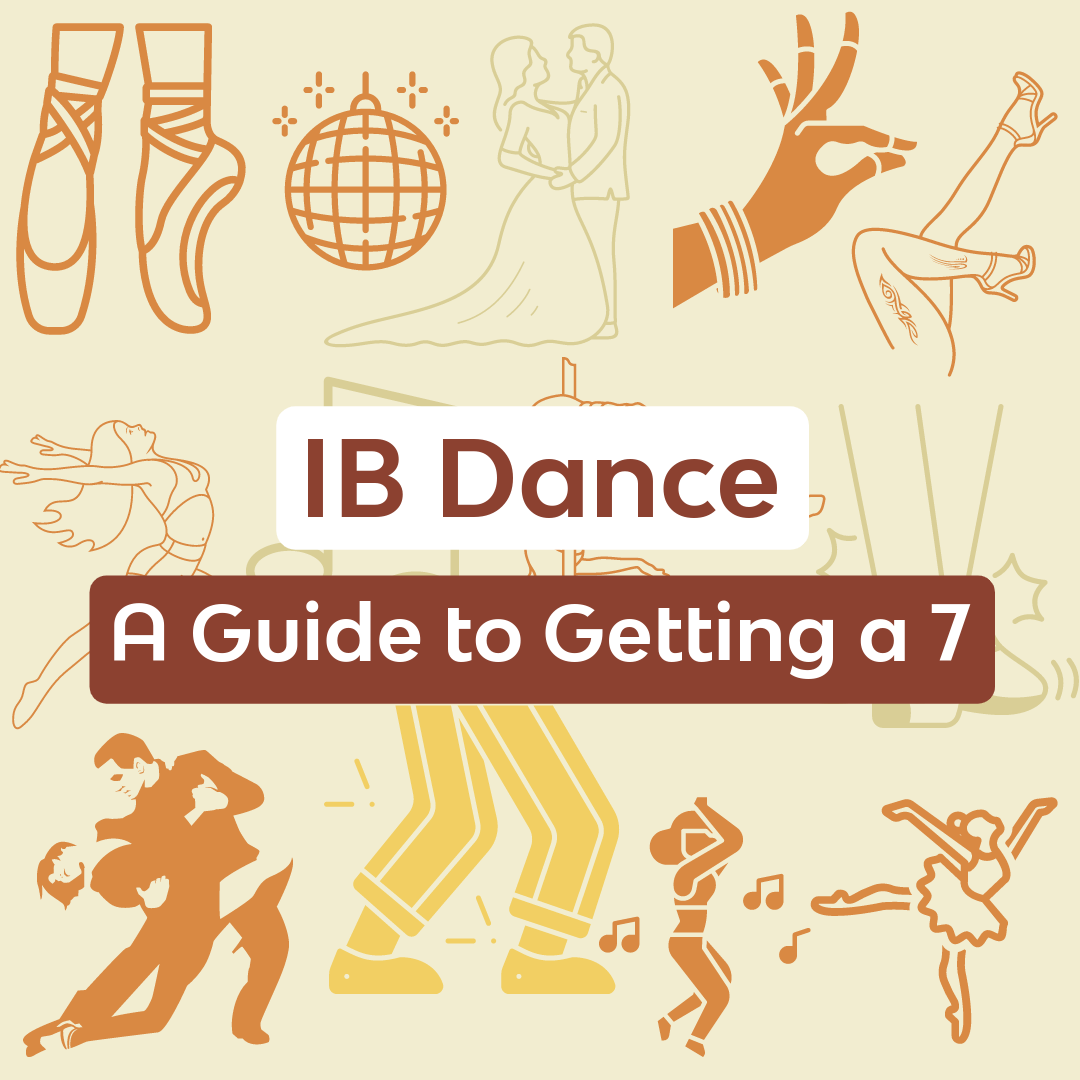Jan 18, 2024
By: Sophie
Everything You Need to Get a 7 on IB Dance
Hey there! This article is all about our tips for how to study for the IB Dance exam to get a solid 7. I'll break down the tricks, so with the right strategies and resources, nailing the exam is totally doable!
Free IB Dance Resources!!
Hey, no worries if you're in a last-minute cramming session for IB Dance! We totally get it, and trust me, we've all been there too! So, if you're wondering how to ace the IB Dance exam when you're running out of time, here are some awesome resources and IB Dance exam tips created by fellow students that will help you cram like a boss.
This ULTIMATE IB Dance Study Guide - pretty much everything you need to know for the exam, written by a former IB Dance student!
Our Favorite Additional Site for IB Dance
What should I expect from the IB Dance Exam?
The exam is broken down into THREE assessments - here is a breakdown of what you’ll need to know and what to expect from each section:
The composition and analysis part of the IB Dance Standard Level (SL) exam focuses on creating original dance works and analyzing them. Students are expected to compose two dance works totaling 6-10 minutes, which are submitted on DVD. Additionally, they must write an analytical statement (maximum 1500 words) discussing the composition and analysis of one of these dances. The weighting of the final grade for this section is 60%. The assessment also includes a dance investigation, where students compare two dance styles from different cultures, and a performance component, which involves performing one or two dances (solo/duet/group) for a total presentation of 3-6 minutes. The performance is weighted at 40% of the final grade.
For the IB Dance Higher Level (HL) exam, the composition and analysis component involves creating three dance works totaling 8-15 minutes, submitted on DVD. Students also write an analytical statement discussing the composition and analysis of one of these dances. This part of the exam is weighted at 60% of the final grade. Additionally, there is a dance investigation component (weighting 25%) where students analyze two dance styles from different cultures, and a performance component (weighting 40%), where students perform two or three dances (solo/duet/group) for a total presentation of 6-9 minutes.
In both IB Dance HL and SL, the dance investigation part is your chance to explore and compare two dance styles from different cultures. For SL, this investigation counts for 25% of your final grade. You'll delve into the history, development, and characteristics of these styles. The cool part? You get to create a written report of 1500-2000 words along with a practical exploration, showcasing your understanding. HL students, you've got a similar task but with a bit more depth, a max of 2,500 words, and it makes up 25% of your grade too.
Alright, let's get into the nitty-gritty of the IB Dance performance part! For SL, you're looking at 40% of your total grade. You'll either perform a solo or join a duet/group, dancing for a total of 3-6 minutes. It's a fantastic way to showcase your individual dance skills or your ability to move in harmony with others. HL students, this part also accounts for 40% of your grade, but you'll need to prepare two or three performances, either solo, in a duet, or as part of a group. Your total performance time bumps up to 6-9 minutes. It's your time to captivate the audience with a wider range of dance styles and techniques!
How should I prepare for the IB Dance Exam?
Ready to compose and analyze your dance for the exam? Start by brainstorming ideas that excite you. Create a storyline or theme for your dance. Then, play with movements that fit your concept. Record your rehearsals to refine your choreography. Analyze your work: What story does it tell? How do the movements reflect the theme? Write down your thoughts as they'll form your analytical statement. Remember, this is your artistic expression, so have fun with it and let your creativity flow!
Preparing for the dance investigation section is like being a dance detective! Dive into the history, development, and techniques of two dance styles from different cultures. Think of it as a fun exploration rather than just a project. Immerse yourself in videos, books, and articles to understand the essence of each style. Maybe even attend workshops or classes if possible. Then, get creative with your writing and practical exploration, showing your deep understanding and appreciation of these rich dance cultures. Remember, it's about discovery and connection with dance, so enjoy the journey!
For the performance section, start by choosing your dance style(s) and music that really speaks to you. Practice, practice, practice! Work on your technique, expression, and stamina. It's not just about the steps, but how you tell a story or convey emotion through your movements. Record your rehearsals to spot areas to improve. Also, think about your costume and how it complements your performance. Stay fit and healthy; a strong body supports a strong performance. Finally, have fun and let your passion for dance shine on stage!
